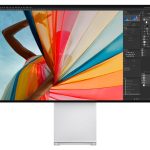
Apple is well ahead in its transition phase from using Intel chips to its custom silicon. While Apple has made great strides with its new M1 Max chip in the new MacBook Pro models, Intel claimed that its latest chips are faster than Apple’s. However, it all boils down to independent tests and what the benchmarks reveal. With that said, the latest benchmark results reveal that Intel’s Alder Laker Core i9 chip beats Apple’s M1 Max chips. While Intel’s claims are true, there are certain downsides. Scroll down to read more details on the subject.
Intel’s 12th-Generation Alder Lake Core i9 Chip Outperforms M1 Max in 16-Inch MacBook Pro But it is Way More Power Hungry
The latest benchmark tests were conducted on the MSI GE76 Raider Laptop. As noted by Macworld, early benchmark results of the Alder Lake Core i9 chip confirm that it is more powerful than the M1 Max chip that powers the new 16-inch MacBook Pro. The Geekbench 5 results appear to show that the MSI GE76 Raider, housing the Alder Lake Core i9-12900HK, has an average multi-core score of 12,707. On the other hand, the M1 Max chip features a multi-core score of 12,244. In comparison, the Core-i9 processor is 4 percent faster than the M1 Max chip.
Geekbench is a general, overall usage benchmark that we use to test all of Apple’s chips in Macs and iPhones. In Geekbench 5’s multi-core CPU test, the Alder Lake Core i9 has a 5 percent lead over Apple’s processor. In the single-core test, Alder Lake’s improvement was 3.5 percent. That’s basically a draw. Alder Lake has a slight edge, but it many cases, you won’t even notice a difference.
Take note that the MSI GE76 Raider draws power from the wall while running the CPU-only Cinebench R23 benchmark. It was measured by PCWorld that the Core i9 processor was consistently resting in the 100-watts bracket and also jumped up to 140-watts at times. However, AnandTech found that Apple’s M1 Max chip in the MacBook Pro models used only 40 watts, in comparison.

In terms of graphics, when you couple the Alder Lake Core i9 chip with NVIDIA’s expensive RTX3080 Ti GPU, the differences are massive. It received an OpenCL score of 143,594 against the M1 Max’s score of 54,774. However, if you consider the onboard GPU then Intel’s score drops to 21,097.
Since the MSI GE76 is power-hungry, PCWorld has found the machine to last nearly six hours with offline video playback. In contrast, Apple advertises the 16-inch MacBook Pro to last up to 21 hours for offline video playback. Moreover, we also have to consider the massive difference in display technologies used by the machines, In terms of design, the GE76 is a chunky machine with a 17-inch display and weighs nearly 6.5 pounds. The new 16-inch MacBook Pro is 4.8 pounds.
This is all there is to it, folks. Share your valuable insights with us in the comments section below.
The post Intel’s Alder Lake Core i9 Chip Beats Apple’s M1 Max in Latest Benchmarks, But Consumes More Power by Ali Salman appeared first on Wccftech.
Powered by WPeMatico






